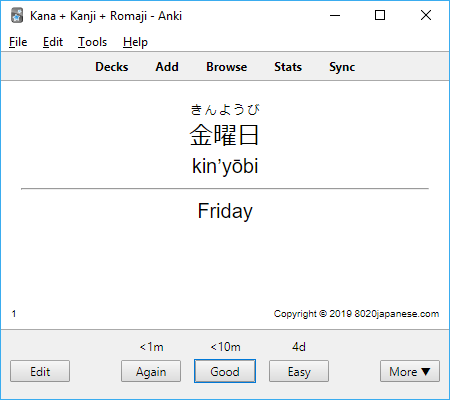
The good think about Anki is it’s highly customizable. You can make text-based cards with words or cloze passages but the cloze feature is far from intuitive. You’ll need to add all the info yourself, one flashcard at a time, which can be time-consuming for languages with different alphabets, characters or accents you’re not familiar with. But sometimes it gets a bit repetitive.Ĭreating a new deck in Anki is definitely more labor intensive than Reji. Anki then keeps track of which cards need to be reviewed when so that you won’t forget any. Then, Anki will display a word, you check if you’re correct by hitting “show answer”, and then categorize the word again, hard, good or easy which corresponds to a time interval of 10 minutes, 4 days, 7 days or 10 days when you will next be tested. You decide how many cards you want to study per day. At first glance, you’re not likely to understand what a filtered deck, for example, is.Īnki has one standard study mode – card flipping. It’s pretty intuitive but sometimes a little confusing. It is compatible with Android, iOS, FreeBSD, macOS, Windows, and Linux.Īs far as its interface goes, Anki keeps things simple.

AnkiMobile like Reji uses spaced repetition to help users memorize and retain information but is a little less user-friendly. Anki is available for both desktop and mobile, which makes it great for everybody, no matter what device you use.Īnki is available in 48 languages, including Greek, Portuguese, traditional and simplified Chinese, Thai, Hungarian, Russian, English, and more. Anki App is a cross-platform mobile and desktop flashcard app.


 0 kommentar(er)
0 kommentar(er)
